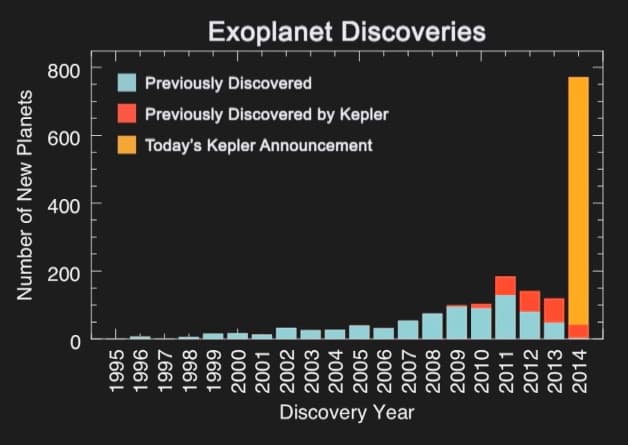Advertisement
Hundreds Of New Planets Confirmed By NASA
ResumeNASA has confirmed the existence of 715 new planets. It's all thanks to the work of the Kepler Mission, which is tasked with finding habitable planets in the Milky Way galaxy.
Of the 715 planets confirmed, 100 of those are about the size of Earth, and four are in the habitable zone of their stars, meaning they're not too hot or too cold.
Pete Worden, director of NASA's Ames Research Center, where the Kepler Mission is based, joins Here & Now's Jeremy Hobson to discuss how Kepler finds new planets, and the likelihood that they support life.
Interview Highlights: Pete Worden
On the contributions made by the Kepler Mission
"The fundamental question that everyone wants to know is, are we alone? Kepler has made major progress in figuring out are there planets like the Earth around other stars. The problem is, is that we do it sort of indirectly. We're looking for small changes in the light of a star. It's kind of like if I look at a streetlight, and a bug flies in front of it, I see a small decrease in the light. In this case, it's only a few hundred thousandths of the light level. The problem is, there's a lot of other things that can cause that. A lot of our effort is to get rid of false positives."
"The key thing is to figure out which things are real, and particularly which ones are kind of Earth-sized, and even more important if we find things that are in what we call the 'habitable zone,' which is a planet that could support life as we know it on Earth."
On how close we are to finding life on other planets
"Kepler was a survey mission, so it looked at planets pretty far away. These are hundreds to thousands of light years away. What we're really interested in is the nearest stars. So the next step is going to be to look at these and see if there's any transiting planets. So in the next decade, we're going to answer the question, 'are we alone.'"
On the types of life that could be found
"It's kind of unclear what we mean by what we find, 'other life.' We're really thinking that what we're going to see is evidence of plant life and other things. We're gonna be looking for evidence of some form of life, and it could've been anywhere in the history of the planet."

Guest
- Pete Worden, director of NASA’s Ames Research Center. He tweets @worden.
This segment aired on February 27, 2014.